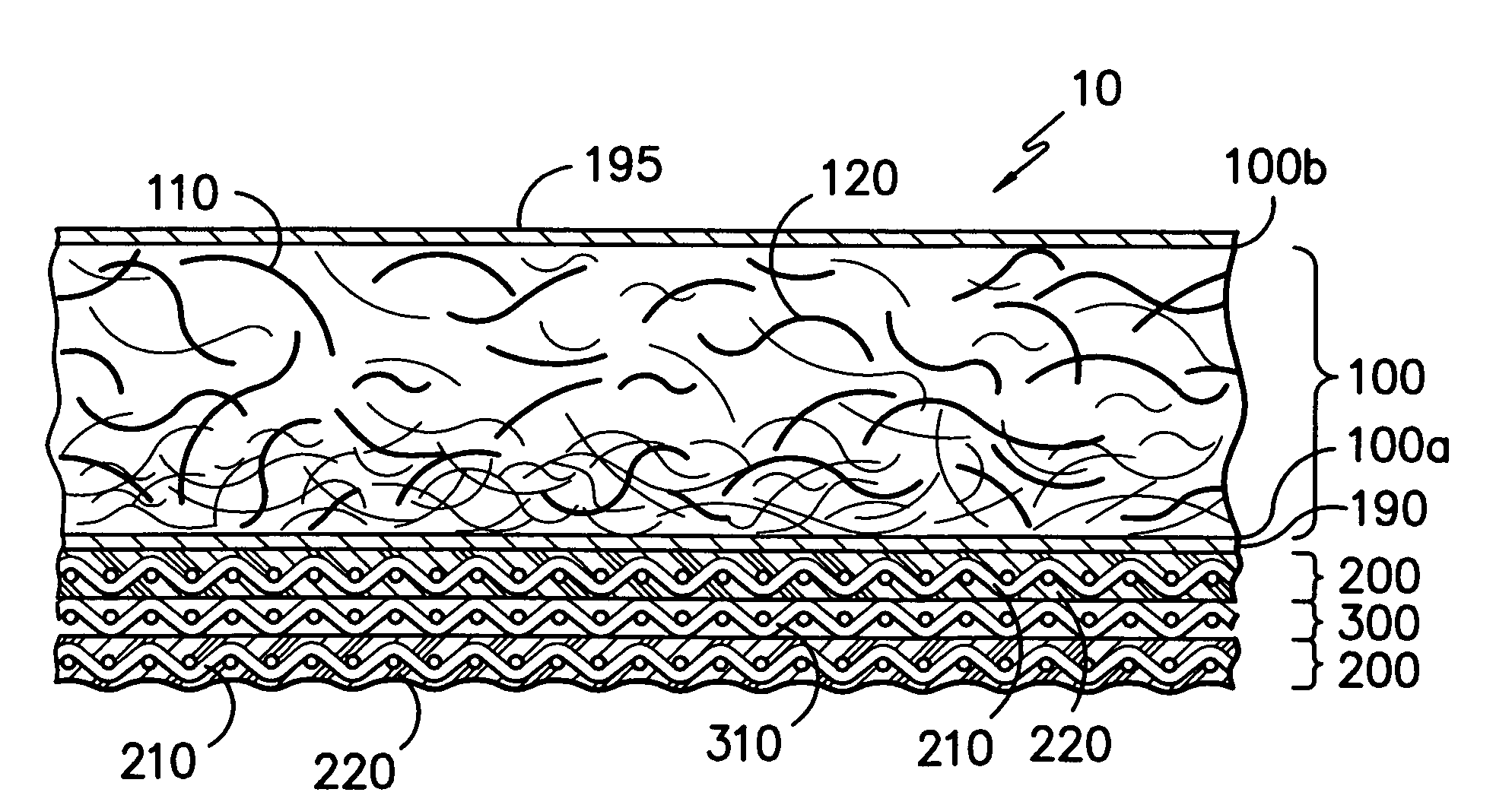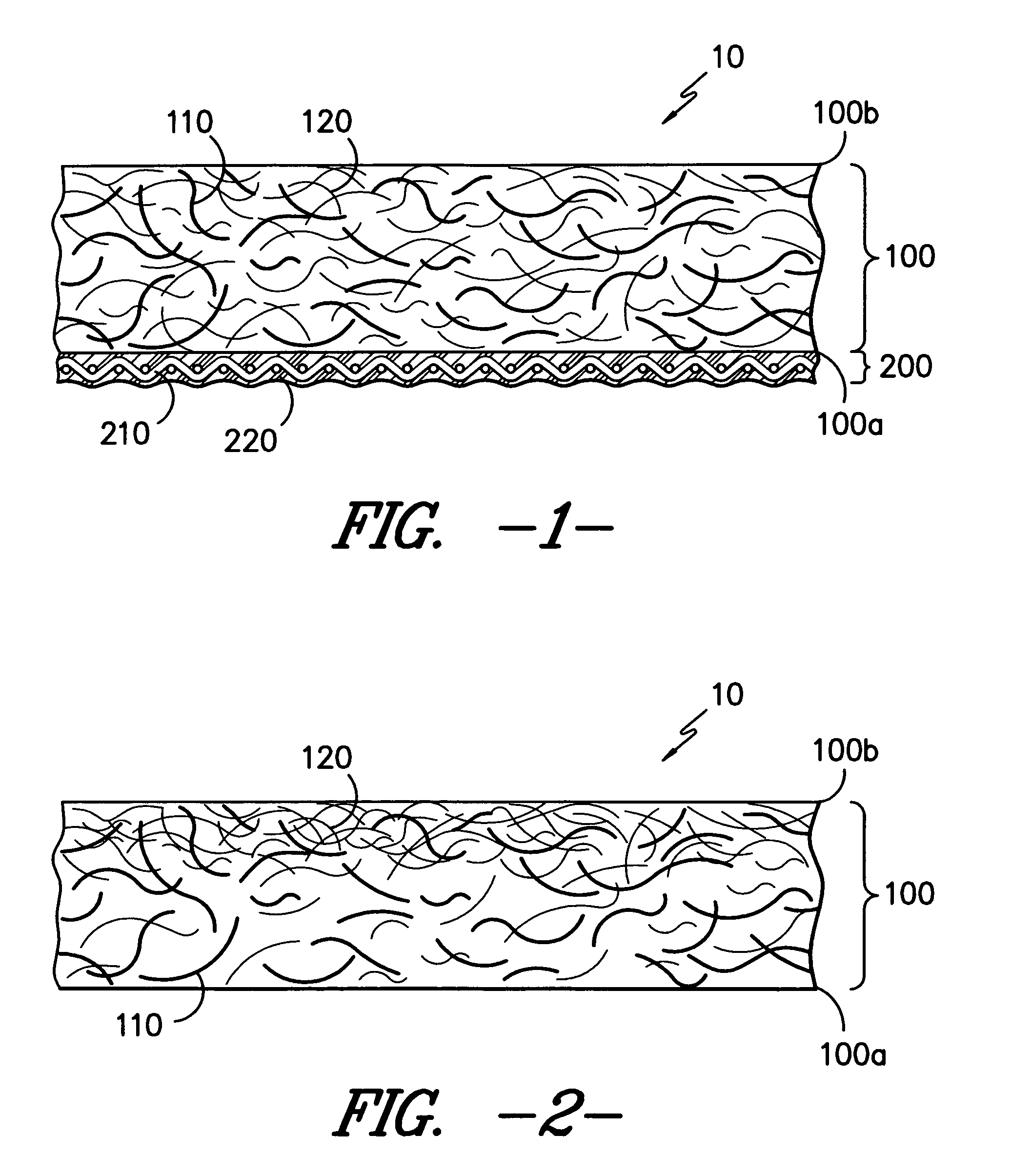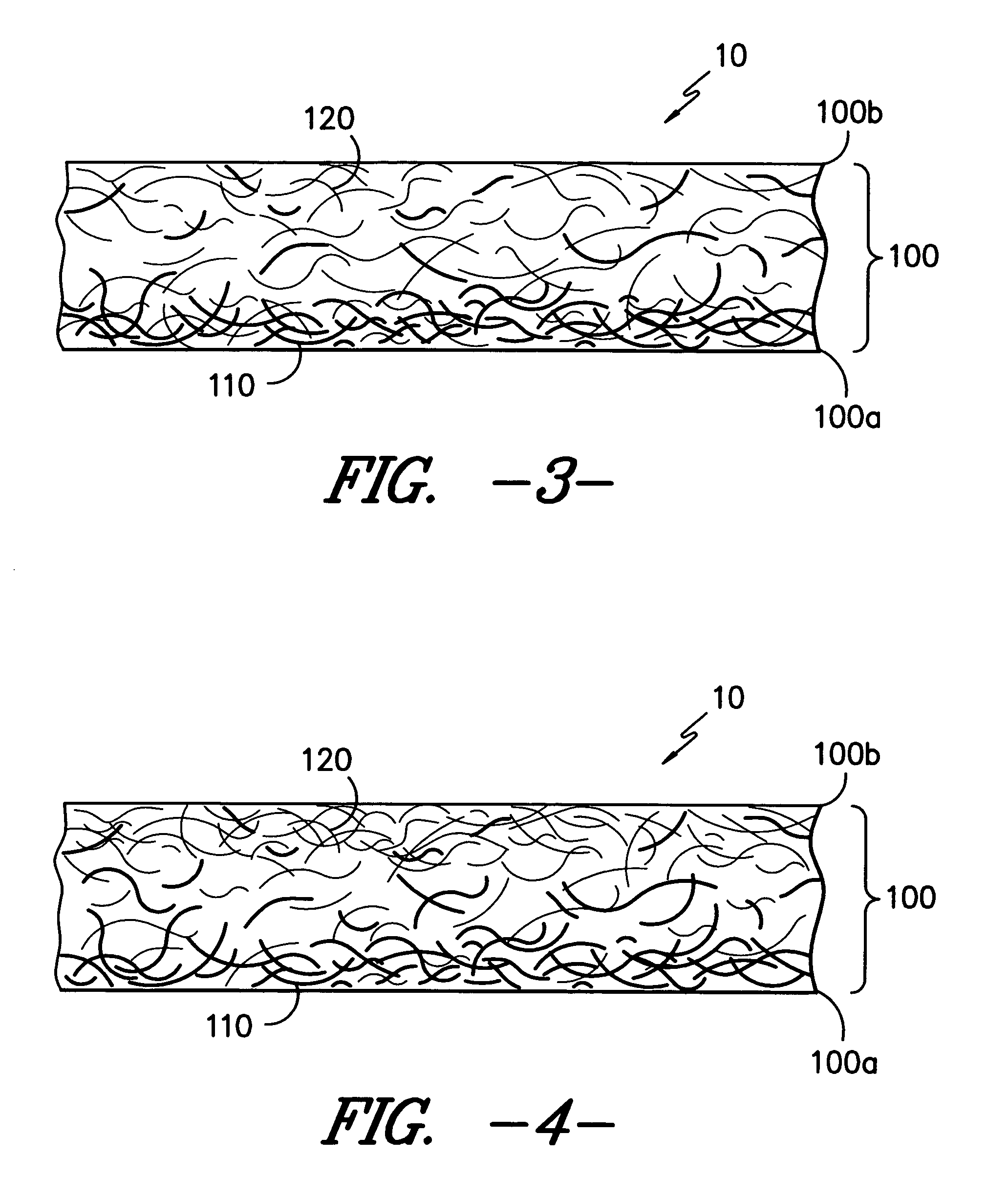Multi-layer composite material
a composite material and multi-layer technology, applied in the field of composite materials, can solve the problems of delamination, face buckling or catastrophic failure, and the composite structure of honeycomb cores may have difficulty in being molded into complex three-dimensional geometries, and achieve the effect of reducing the number of layers
- Summary
- Abstract
- Description
- Claims
- Application Information
AI Technical Summary
Problems solved by technology
Method used
Image
Examples
example 1
[0036]Two (2) layers of POLYSTRAND® IE7033X available from Polystrand Inc. (Montrose, Colo.), were applied to both the upper and lower surfaces of the first layer (for a total of 4 layers of IE7033X). POLYSTRAND® IE7033X is a 0° / 90° cross-ply bidirectional laminate containing 70 wt % continuous E-glass structural reinforcing fibers in a co-polymer polypropylene matrix. The areal density of a single layer of POLYSTRAND® IE7033X was 660 gram / m2. The composite was consolidated to a thickness of 5.6 mm using a platen press set at 193° C. (380° F.). The sample was allowed to cool to 100° F. while still under pressure before it was removed.
example 2
[0037]Three (3) layers of POLYSTRAND® IE7033X were applied to both the upper and lower surfaces of the first layer (for a total of 6 layers of IE7033X). The composite was consolidated to a thickness of 5.2 mm using a platen press set at 193° C. (380° F.). The sample was allowed to cool to 100° F. while still under pressure before it was removed.
example 3
[0038]One (1) layer of POLYSTRAND® IE7032T available from Polystrand Inc. (Montrose, Colo.), was applied to both the upper and lower surfaces of the first layer (for a total of 2 layers of IE7032T). POLYSTRAND® IE7032T is 0° / 90° / 0° bidirectional laminate containing 70 wt % continuous E-glass structural reinforcing fibers in a co-polymer polypropylene matrix. The areal density of a single layer of POLYSTRAND® IE7032T was 1240 gram / m2. The composite was consolidated to a thickness of 5.3 mm using a platen press set at 193° C. (380° F.). The sample was allowed to cool to 100° F. while still under pressure before it was removed.
PUM
| Property | Measurement | Unit |
|---|---|---|
| modulus | aaaaa | aaaaa |
| concentrations | aaaaa | aaaaa |
| concentration | aaaaa | aaaaa |
Abstract
Description
Claims
Application Information
 Login to View More
Login to View More - R&D
- Intellectual Property
- Life Sciences
- Materials
- Tech Scout
- Unparalleled Data Quality
- Higher Quality Content
- 60% Fewer Hallucinations
Browse by: Latest US Patents, China's latest patents, Technical Efficacy Thesaurus, Application Domain, Technology Topic, Popular Technical Reports.
© 2025 PatSnap. All rights reserved.Legal|Privacy policy|Modern Slavery Act Transparency Statement|Sitemap|About US| Contact US: help@patsnap.com



